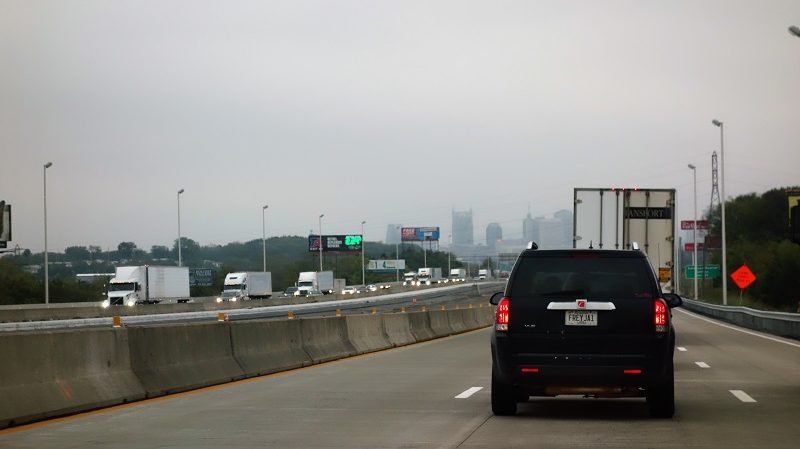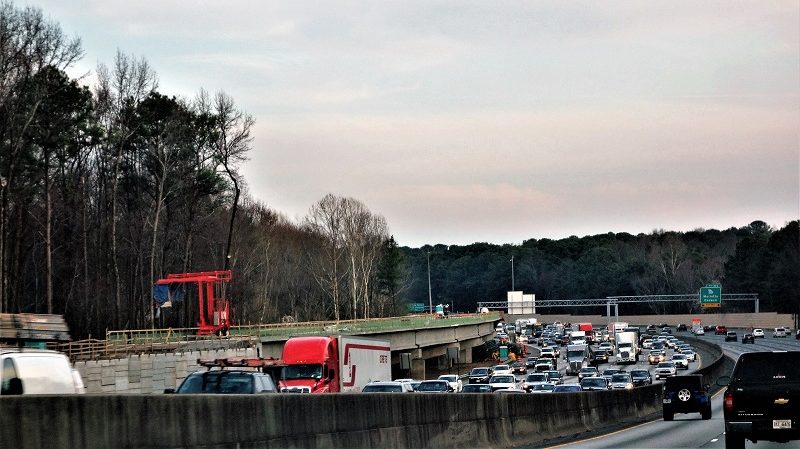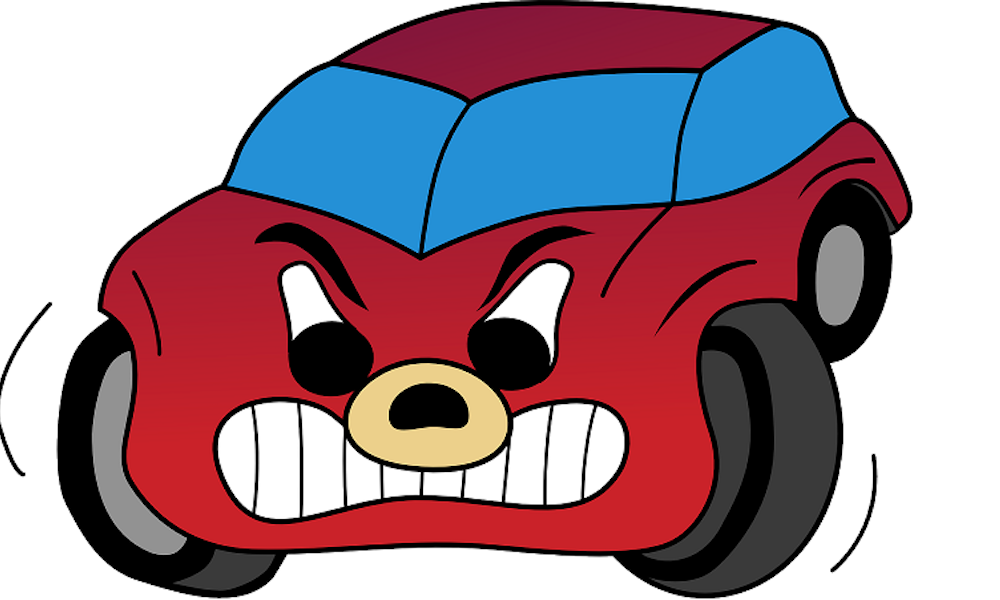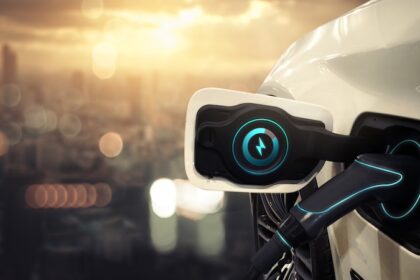Infinite expanses, wide streets, little traffic and great landscapes. This is why so many rave about the driving in the USA. These things may also be true if you are traveling in the Western part of the US or outside big cities. But after five years of driving in the Midwest, I can only say: they’re all crazy!
I have been in Ohio for a few months a year for the past five years. In the middle of the US. In many ways, Ohio is a very beautiful spot in the world. But this is not necessarily true when it comes to driving. The courtesy of the Midwesterners on the road leaves me with total road rage …
This lane belongs to me
Typical drivers in the Midwest take it easy. Even if this means missing two green lights because they are on the phone, chowing down on some fast food, or who knows what else. Taking it easy sounds nice, but it also leads to grotesque driving.
Thus, the leisurely Midwesterner does not change lanes. Not at all. That would be too stressful. If someone knows that they have to turn left in 10 kilometers, they’ll stay in the left lane all the way. Whether the traffic situation allows it or not. It doesn’t matter if they hold up the entire flow of traffic. All the way!
So if I try to stay in the right lane, for example if I’m driving slowly (okay, I drive a little slow, but not under the speed limit), then need to get in the left lane to make a turn, it can be a problem: nobody lets me over. For the Midwesterners, it is quite clear: I am trying to cut them! (Yes, they are relaxed, but if you try to get in front of someone in their lane, suddenly it’s back to kindergarten).
Here, forward-looking driving means switching lanes a few kilometers before the turn. If I have not done that, it’s nobody’s fault but mine.
This leads to such absurd situations. I have to stay in the middle lane. The cars in the middle lane behind me are held up (again, I’m not such a slow driver, but I prefer to take it easy with all the recklessness around me which I will soon describe). Of course, they do not change into the right lane to get past me, because they don’t change lanes. There is a jam. The cars on the left lane, on the other hand, do not care about it and I just have to wait for a gap big enough so I can change lanes.
After all, no one honks.
Passing on both sides
On the highways in the US, exits are on the right and the left. That is why there is only the recommendation, but no strict rule that you only have to pass on the left lane.
Thus, Americans are accustomed to passing cars from both the left and the right.
At the same time, there is not the fixed rule that you have to drive faster on the left than on the right. Also it is quite acceptable to spend hours in the middle lane.

This results in two things that drive me nuts (and one day very well may give me a heart attack): wolfpacks and (completely unnecessary) risky passing maneuvers.
Like the wolves
The wolfpack comes from a combination of Midwesterners’ stubbornness and the fact that you can ride in any lane at any time, however long you want. The pack can develop over three lanes when one driver is blocking the middle lane, another is to his right because he’s going to exit from that lane (in 20 kilometers) and on the left, a driver is going at the same speed as the other two because he is chilling in the fast lane without passing anyone – just because he can.
These three cars traveling at the same pace across all the available lanes are the start of a wolfpack. Soon, they will be joined by others from behind, who of course, just want to keep moving, but can’t because, the three cars holding things up across all the lanes won’t budge.
In this situation, if you want to drive faster, too bad for you. If you want to change lanes to the left or right, too bad. I have missed my exits several times, because I simply could not break out of the pack to get in the proper lane to exit.
Logic, where are you?
Often, precisely because of the wolfpack, arise very risky passing maneuvers. Or so they appear to me at least. I also get the feeling that I am the only one almost having a nervous breakdown from how everyone drives.
Maybe I just don’t understand what is going on. Indeed, in all these years, I have not found any logic in how people pass on the highway in the Midwest. The cars go along for 10 minutes blocking all the lanes, without it seeming to bother anyone.
Until someone suddenly seems to decide “I’ll give it some gas.” Maybe a fast song came on the radio or someone suddenly got hungry or got bored with the view of the same two cars on the right and left for 30 kilometers.
This happens, of course, exactly when a different driver is starting to think “Maybe I should change lanes.” As I said, I have not yet been able to decipher when and why the frequent synchronicity in these lane-change decisions.
The result is in any case the following: three cars trying to change lanes at the same time (of course, from all sides), which ends either in a quick accident or with me freaked out and clutching the wheel with very shaky, sweaty hands ,

Blinkers are unnecessary, you do not need mirrors
Now this strange passing behavior might not be quite so annoying if the Americans were to use their turn signals or mirrors. But somehow, the motto seems to be here: the others will already know where I am going.
Mirrors also seem to be understood as a senseless accessory, so that it is constantly happening that the drivers do not look into the rear or side-view mirror before their strange passing attempts.
But if you just do not understand when, where, and who is overtaking from where, and then nobody else uses the blinker or looks into the mirror, this is the perfect recipe for chaos!
And then there will be honking . . .
You know how I said no one honks? I lied. True, Midwesterners seem quite averse to using the horn, but then come moments when even this staid lot lose their patience. For reasons unclear. (I have not seen a real pattern in why they sometimes just seem to lose it). And in such moments, anything is possible.
Yelled curses, interesting hand signals, just hope they don’t reach in the glove compartment.
Now, I have simply given up on trying to understand drivers in the Midwest. Perhaps I should rather adhere to the old wisdom: when in Rome, do as the Romans. And when in the Midwest, forget all the driving rules you’ve ever learned.










